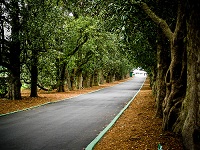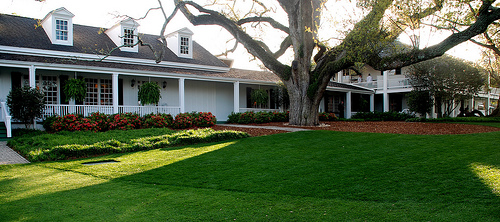Augusta National Golf Club
![]() Online Sportsbooks
Online Sportsbooks ![]() Sports Information
Sports Information ![]() The Masters
The Masters ![]() Augusta National
Augusta National
 The mystique of Augusta National Golf Club is unparalleled by any other course in the United States. Opened in 1934, Augusta National has hosted the Masters tournament every year since. Situated in the small town of Augusta, Georgia, every year in April, this 365-acre piece of land is the center of the sports world.
The mystique of Augusta National Golf Club is unparalleled by any other course in the United States. Opened in 1934, Augusta National has hosted the Masters tournament every year since. Situated in the small town of Augusta, Georgia, every year in April, this 365-acre piece of land is the center of the sports world.
Prior to the construction of the Masters Golf Course, the property was an Indigo Plantation and hosted Fruitlands Nurseries. Many plants and trees from across the globe were brought to the land, and, when it closed down in 1918, the vegetation remained on the property. Upon crossing the the rare gem of land in 1930, Bobby Jones deemed it the perfect property to construct his golf course vision.
"Perfect! And to think this ground has been lying here all these years waiting for someone to come along and lay a golf course on it,'' Jones proclaimed upon his first visit to the area.
 Over the decades, Augusta National Golf Course has become the standard for which all courses are held to. Combined with a state-of-the-art maintenance facility and a limitless budget, the course stays in immaculate condition. The course is only open for play during the months of October-May.
Over the decades, Augusta National Golf Course has become the standard for which all courses are held to. Combined with a state-of-the-art maintenance facility and a limitless budget, the course stays in immaculate condition. The course is only open for play during the months of October-May.
The holes on Augusta National Golf Club are as well known the Masters Tournament itself. The famous "Amen Corner" includesthe second shot on the 11th, all of the 12th and the tee shot on the 13th. Often, a tournament is won or lost on this stretch of course. Each hole on the golf course is individually named. For example the first hole is "Tea Olive."
 The greens on Augusta National have seen as much change as anything on the course. Up until the 1980's the grass used on the greens was a wide-bladed Bermuda. The greens began losing speed after a narrow-bladed Bermuda grass overtook the wide-bladed. This new string of Bermuda grew thick, which resulted in the slowing of the greens. Augusta National took the step of replacing the greens with bent-grass, that is still used today. The putting surfaces are noticeably quicker than previous years and are widely perceived as some of the fastest, and most difficult greens on the PGA Tour.
The greens on Augusta National have seen as much change as anything on the course. Up until the 1980's the grass used on the greens was a wide-bladed Bermuda. The greens began losing speed after a narrow-bladed Bermuda grass overtook the wide-bladed. This new string of Bermuda grew thick, which resulted in the slowing of the greens. Augusta National took the step of replacing the greens with bent-grass, that is still used today. The putting surfaces are noticeably quicker than previous years and are widely perceived as some of the fastest, and most difficult greens on the PGA Tour.
| Augusta National Renovations Synonymous with many golf courses today, Augusta National underwent a generational makeover in 2002 and 2006, to combat new findings in golf club and golf ball technology. At the conclusion of the 2001 Masters tournament, the par 72 course measured 6,925 yards in length. After the construction of new tee boxes and added length to several holes, the 2002 Masters Course measured 7, 270 yard. It presented quite a different look from the years previous. Length was added to the course again in 2006 to make the course 7,445 yards, which is its current length today. |
Membership At Augusta National Membership to Augusta National Golf club is by invitation only. There are roughly 300 members at any on time. Fees for a membership are said to be in the neighborhood of only $10,000 annually. The low fees can be attributed to the millions of dollars in revenue generated by the Masters tournament. The club did not accept its first black member until 1990. Augusta National is still thought to practice some forms of discriminatory practices, as they do not allow women on the property, except for the week of the tournament. In 2002, activist Martha Burk famously protested the Masters tournament outside of Augusta National Golf Club. |
 |
|
Bet The Masters At Augusta National Golf Club

